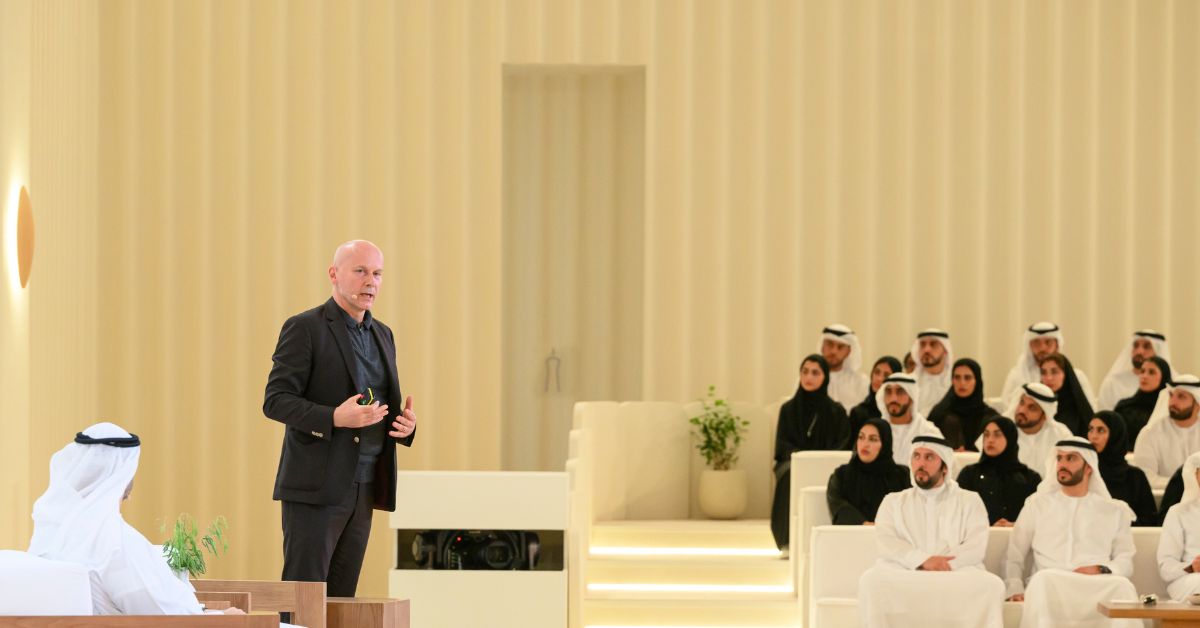ABU DHABI – Future sustainability efforts should go beyond merely doing “less bad” actions and aim to be net positive, said renowned architect and design innovator, Michael Pawlyn.
“For instance, by designing buildings that absorb more carbon from the atmosphere than they release and produce more clean energy than they consume,” Pawlyn said during the recent Majlis Mohamed bin Zayed lecture titled ‘A Sustainable Future Inspired by Nature.’
“This transformation demands a reevaluation of our relationship with nature. Rather than viewing ourselves as separate from nature, our future progress hinges on the health of natural systems that supply life’s essentials,” he added.
Sheikh Khalid bin Zayed Al Nahyan, Chairman of the Zayed Higher Organization for People of Determination, attended the lecture. It delved into how nature can inspire humanity to elevate its sustainability efforts.
The lecture’s theme echoed the UAE and its leadership’s commitment to seize every opportunity and take decisive measures to protect the environment for present and future generations.
Pawlyn began by suggesting that “to profoundly alter our sustainability approach, we must re-envision our human identity.”
He discussed human evolution within the context of ‘deep time’ – the Earth’s history – emphasizing the immediate need to tackle present environmental issues.
Recognized as a global leader in regenerative design and biomimicry, Pawlyn examined human developmental stages, contending that our species must evolve to thrive further.
The discussion also touched on how nature already offers solutions to many contemporary challenges, benefiting from 3.8 billion years of evolutionary fine-tuning.
Pawlyn showcased several recent architectural and design projects inspired by nature to coexist harmoniously with the environment and boost human well-being.
Examples include the Sahara Forest Project, designed to generate clean energy and food while re-greening deserts; a pavilion that extracts water from the air, influenced by ancient Middle Eastern ice-making techniques and the water-retention adaptation in camel nostrils; and a venue utilizing concentrated moonlight to spotlight performers.
The lecture, ‘A Sustainable Future Inspired by Nature,’ was moderated by Saood Al Noori, Head of Diplomatic Engagement at the Office of the UAE Special Envoy for Climate Change. It featured pre-recorded segments from Dr. Nawal Al-Hosany, the UAE’s Permanent Representative to the International Renewable Energy Agency; Habiba Al Marashi, Co-founder and Chairperson of the Emirates Environmental Group; and Mr. Mohamed Al Marzooqi, a communication expert passionate about nature, the environment, and sustainability.








